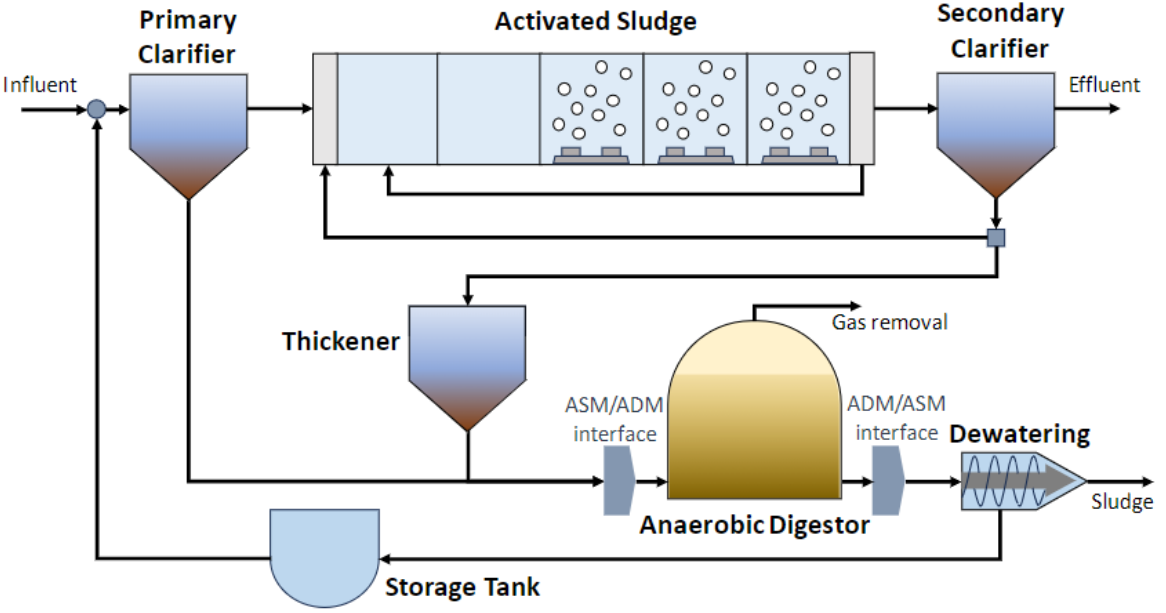Benchmark Simulation Model No.2
Introduction
The Benchmark Simulation Model No.2 (BSM2) is an industry benchmark for modeling a full biological wastewater treatment plant that includes a primary clarifier, the activated sludge process, a thickener, an anaerobic digester, and a dewatering unit. These unit processes are driven by biological reaction models that relate soluble and particulate wastewater components to their respective process rate equations. While this BSM2 flowsheet can simply be used to simulate and run techno-economic analyses on the operation of a conventional wastewater treatment plant, an additional layer of utility can be derived from using BSM2 as a baseline for comparing alternative plant configurations to a well-established standard and/or amongst the variations themselves by adding, removing, or modifying unit processes using WaterTAP’s flexible modeling capabilities.
Implementation
Figure 1 shows the process flow diagram for BSM2 where influent wastewater is fed to a primary clarifier (primary treatment); the effluent is then passed to a series of activated sludge reactors and a secondary clarifier (secondary treatment). CSTRs are used to model the anoxic reactors in the activated sludge process and CSTRs with injection (which accounts for aeration tanks) are used to model the aerobic reactors. Finally, the sludge is passed through a thickener and sent to the anaerobic digester. The anaerobic digester processes the sludge to produce a biogas stream and residual sludge stream that passes through a dewatering unit which recycles liquid to the headworks of the plant while sludge is released for disposal. Costing relationships for each of the unit models is described in the WaterTAP Costing Package The flowsheet relies on the following key assumptions:
supports steady-state only
property and reaction package are provided for the activated sludge model (ASM)
property and reaction package are provided for the anaerobic digester model (ADM)
interfaces are provided to convert between the properties of ASM and ADM

Figure 1. BSM2 flowsheet
- Documentation for each of the unit models can be found here:
CSTR with injection
Primary clarifier
Secondary clarifier
- Documentation for each of the property models can be found here:
Future Refinements
- The following modifications to BSM2 are planned for development:
Improving costing relationships in terms of detail, completeness, and reasonable validity
Accounting for temperature-dependence in the oxygen mass transfer coefficient (KLa) and oxygen concentration at saturation
Adding thermal energy requirements to the anaerobic digester and refining energy consumption estimates for units collectively
Replacing the ideal-separator formulation in the secondary clarifier with the widely used double-exponential settling model (i.e., the Takacs model)